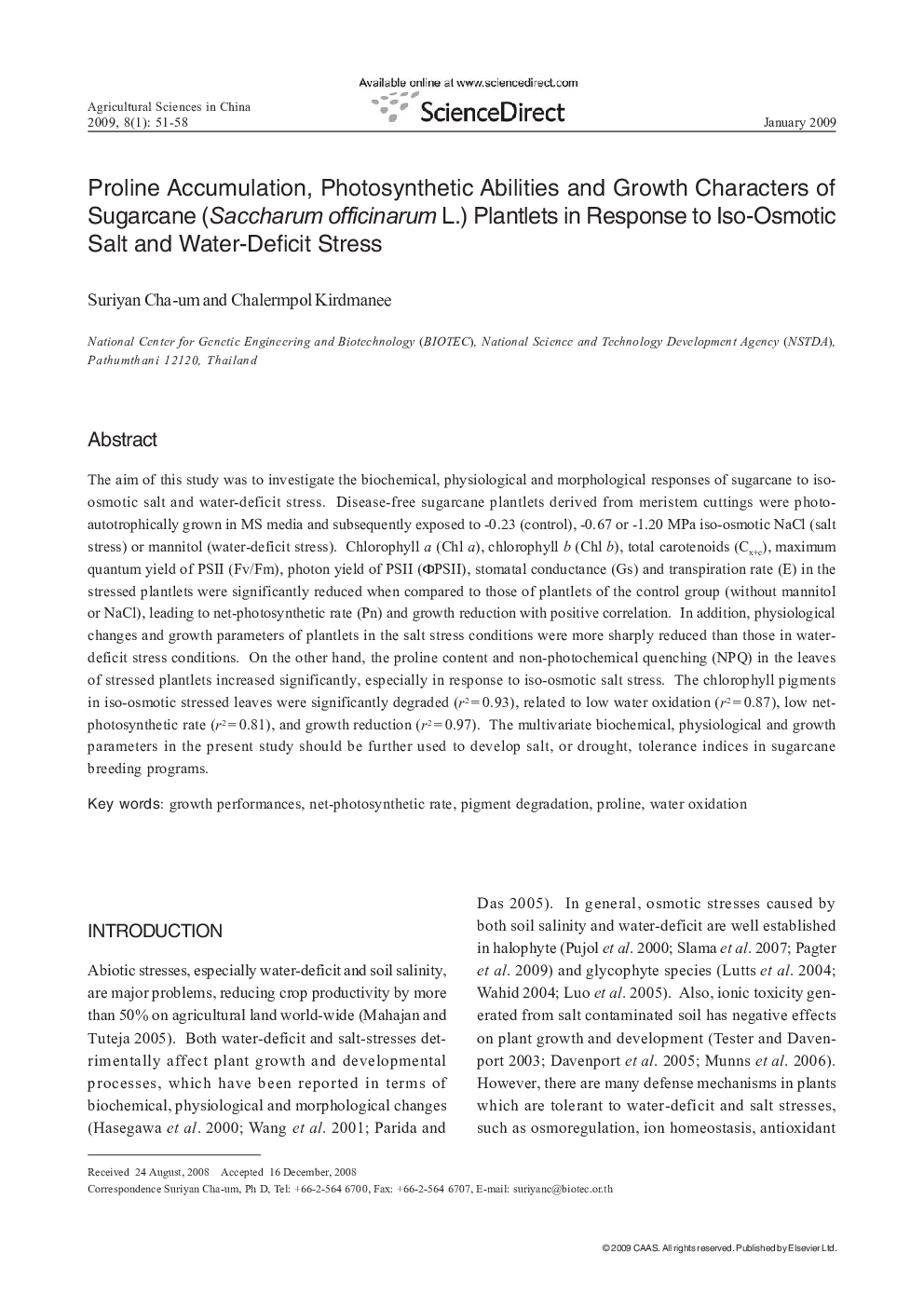| Article ID | Journal | Published Year | Pages | File Type |
|---|---|---|---|---|
| 4490486 | Agricultural Sciences in China | 2009 | 8 Pages |
The aim of this study was to investigate the biochemical, physiological and morphological responses of sugarcane to iso- osmotic salt and water-deficit stress. Disease-free sugarcane plantlets derived from meristem cuttings were photo- autotrophically grown in MS media and subsequently exposed to −0.23 (control), −0.67 or −1.20 MPa iso-osmotic NaCl (salt stress) or mannitol (water-deficit stress). Chlorophyll a (Chl a), chlorophyll b (Chl b), total carotenoids (Cx+c), maximum quantum yield of PSII (Fv/Fm), photon yield of PSII (ΦPSII), stomatal conductance (Gs) and transpiration rate (E) in the stressed plantlets were significantly reduced when compared to those of plantlets of the control group (without mannitol or NaCl), leading to net-photosynthetic rate (Pn) and growth reduction with positive correlation. In addition, physiological changes and growth parameters of plantlets in the salt stress conditions were more sharply reduced than those in water- deficit stress conditions. On the other hand, the proline content and non-photochemical quenching (NPQ) in the leaves of stressed plantlets increased significantly, especially in response to iso-osmotic salt stress. The chlorophyll pigments in iso-osmotic stressed leaves were significantly degraded (r2 = 0.93), related to low water oxidation (r2 = 0.87), low netphotosynthetic rate (r2 = 0.81), and growth reduction (r2 = 0.97). The multivariate biochemical, physiological and growth parameters in the present study should be further used to develop salt, or drought, tolerance indices in sugarcane breeding programs.
